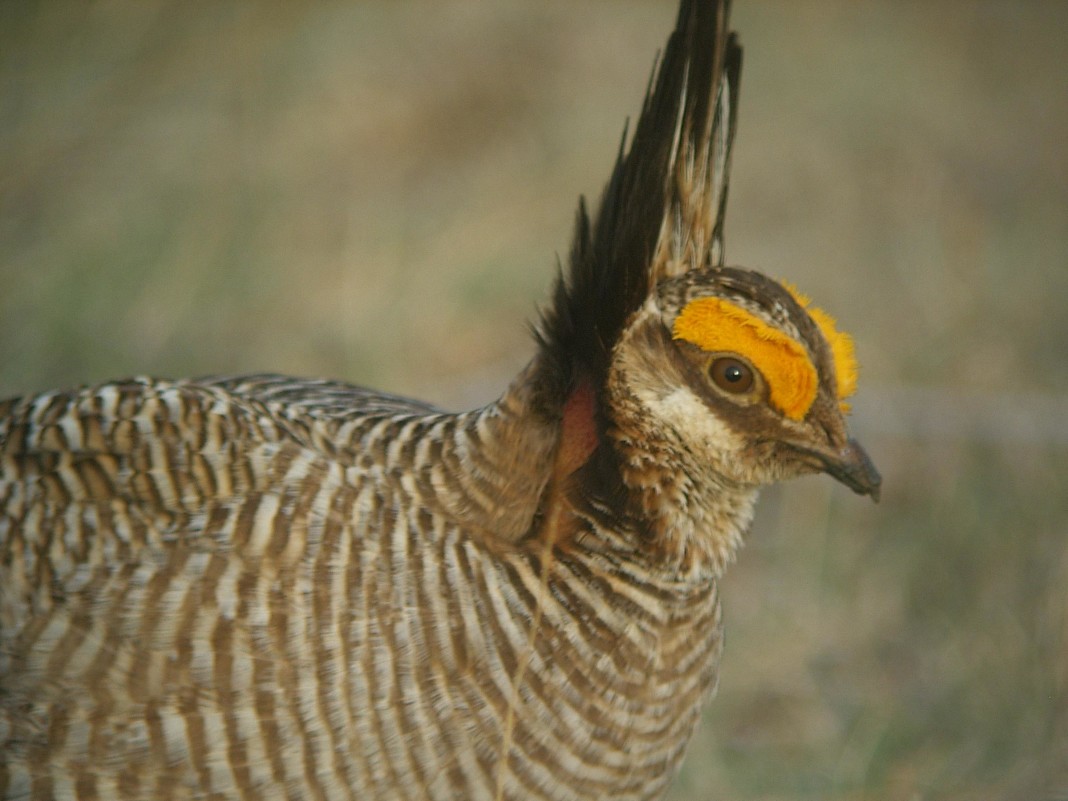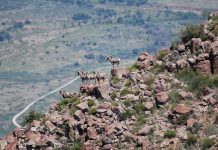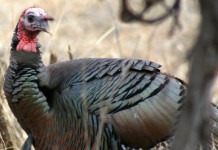The lesser prairie-chicken is a relatively small and ornate bird, but its impact on conservation could be huge and lasting in Texas and neighboring states.
The U.S. Fish and Wildlife Service recently listed the species as threatened under the Endangered Species Act and related efforts to grow the population have received widespread support, including from Texas landowners. The lesser prairie-chicken’s historical range of grassland and prairie has been slashed by roughly 80 percent, according to Service estimates. That territory including in portions of Texas, Colorado, Kansas, New Mexico and Oklahoma now only harbors a little more than 17,000 of the birds, a figure the Service hopes to grow by 50,000 over 10 years with a multi-tiered plan that includes brush control, grazing management, prescribed burning and allowing periodic monitoring, according to the Texas Parks and Wildlife Department.
Nearly 100 landowners in the Panhandle and Rolling Plains voluntarily have enrolled more than 600,000 acres in conservation agreements, marking one of the largest private commitments to conserve a species in state history. The effort has been long in the works, getting its start in 2006 when TPWD signed a Candidate Conservation Agreement with Assurances with the Service. At that time, the prairie-chicken was only a candidate for a threatened or possibly endangered listing. When the Service proposed listing the bird as threatened in 2012, enrollment in the program surged.
By undertaking voluntary conservation measures under the CCAA framework, landowners are assured that no further land use restrictions or conditions will be required from them. In return they undertake associated conservation actions, which not only help the prairie-chicken but also other species. They also receive technical guidance from biologists and the management plan is highly customizable to each individual landowner’s needs and operations.
“Prairie-chicken conservation equals grassland conservation,” said Calvin Richardson, TPWD Panhandle Wildlife Division district leader. “Landowners who provide good habitat for this bird are helping many other grassland-dependent species such as pronghorn antelope and many grassland birds. Further, prairie conservation equals water conservation. Restoring and managing the native grasslands of the Texas Panhandle, including regions with playa lakes, can help provide vital recharge sources for the Ogallala Aquifer.”
The listing means the prairie-chicken is likely to become in danger of extinction within the foreseeable future, and is a step below endangered, allowing for more flexibility in how Endangered Species Act protections are implemented. Also announced was a final special rule under section 4(d) of the Act that limits regulatory impacts on landowners and businesses from this listing.
In addition to private landowners, big industry has thrown its weight behind the plan in connection with the Lesser Prairie-Chicken Rangewide Conservation Plan, composed of more than 30 oil and gas, electric transmission and wind energy companies that have enrolled 3.6 million acres and provided more than $20 million for habitat conservation during the next three years.
Lesser prairie-chicken populations have fluctuated historically due to weather and habitat conditions. In fact, populations were so low during the droughts in the 1930s and 1950s biologists feared the species was almost extinct. However, when rains returned, the populations rebounded, according to TPWD records.
TPWD officials said they were disappointed in the Service’s decision to ultimately list the prairie-chicken as threatened, citing the continuing management plan among the five states above and underlying support for the plan from private landowners and even oil and gas companies, but the decision won’t change any current efforts to aid and restore populations to their previous levels.
In the end, landowners can gain free assistance with their operations, learn more about the unique aspects to their land, potentially make history by saving and restoring a species, and ultimately protect themselves from restrictions should the overall effort not work and the prairie-chicken becomes officially listed as endangered.
Let’s hope it truly becomes a win-win for all species involved, especially a bird that could use a lot of help.






















